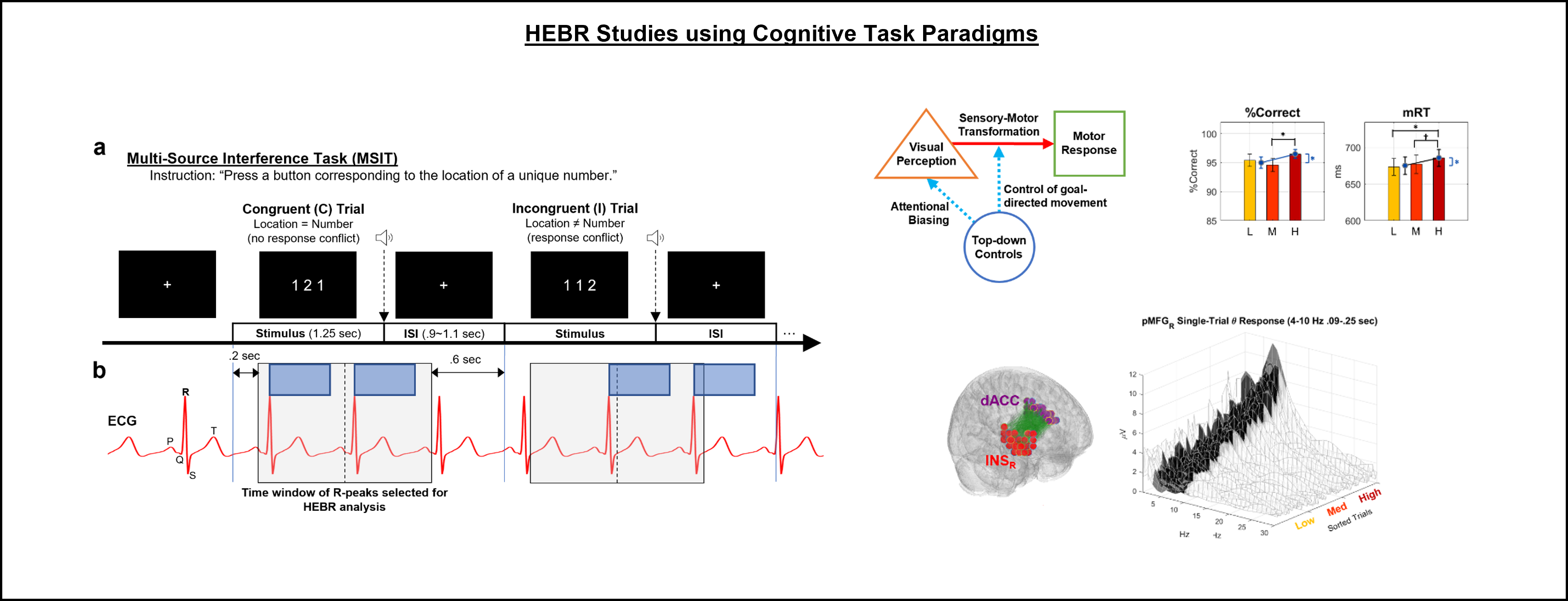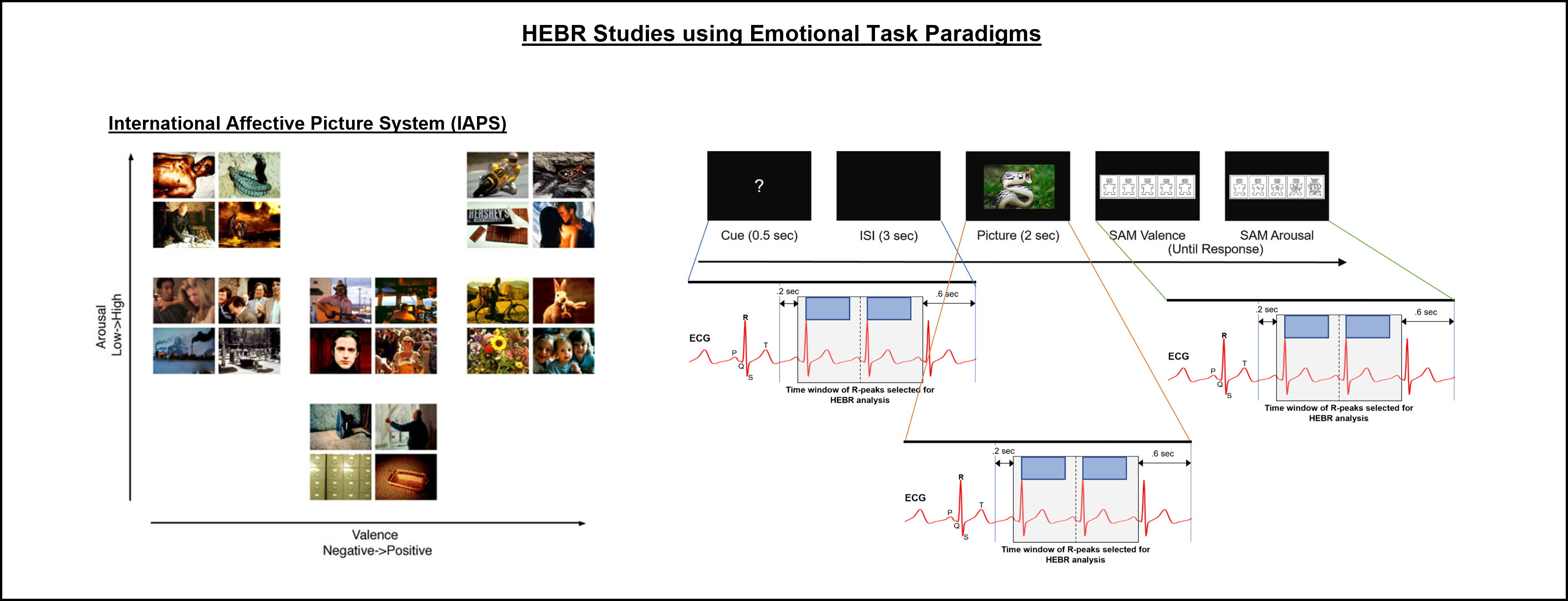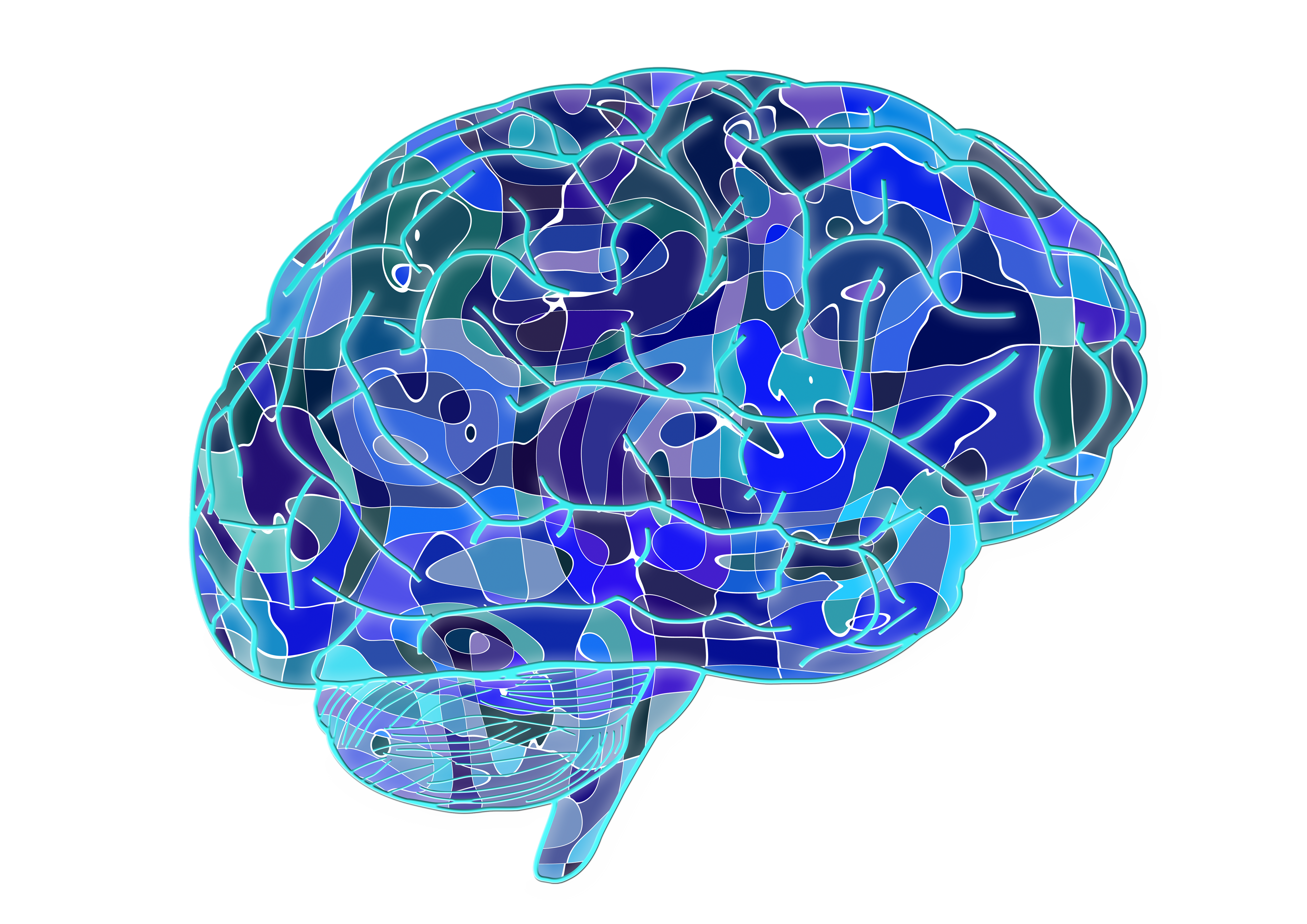Interoceptive Neuroscience & Affective Mental Disorders
Interoception
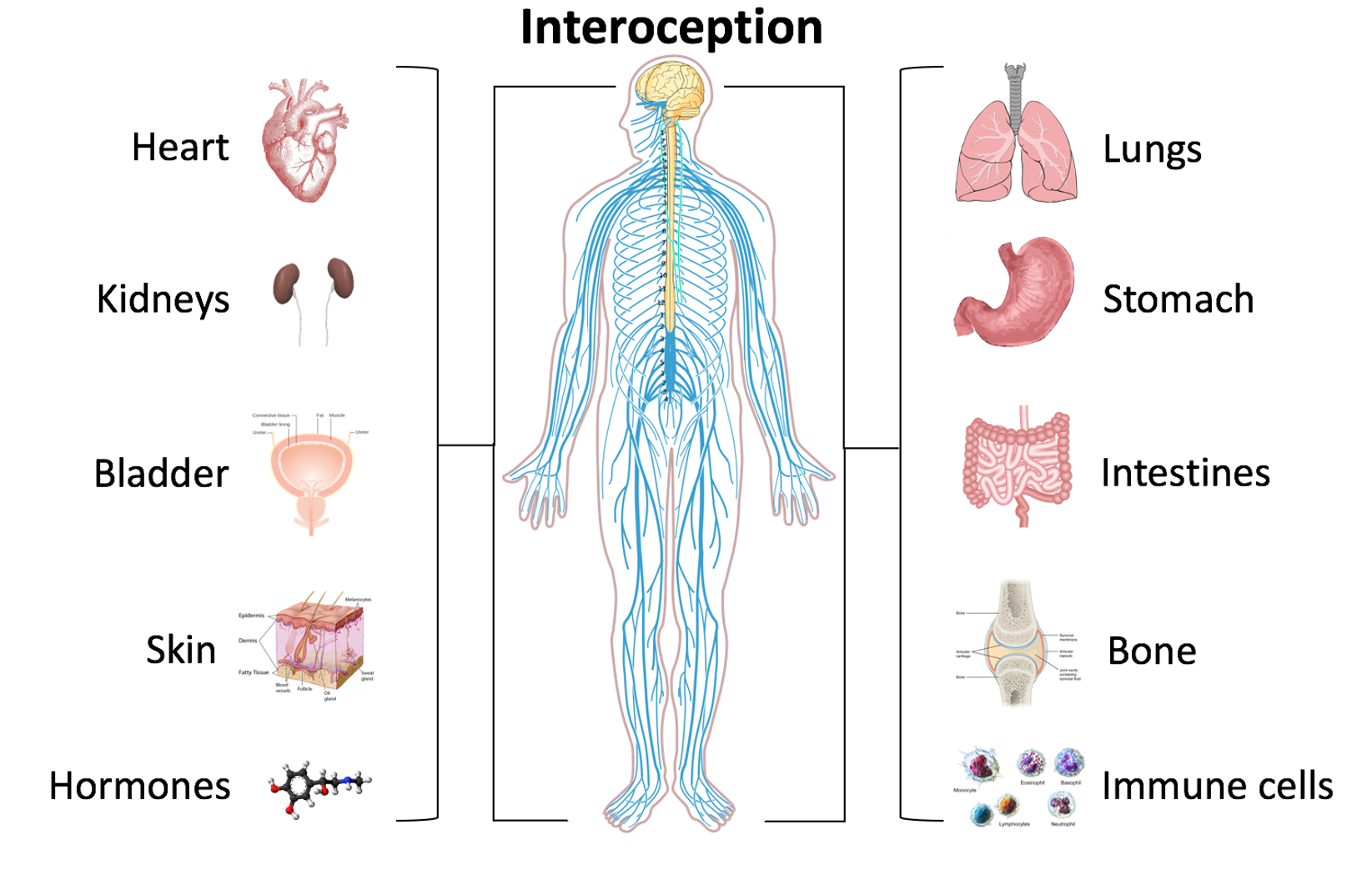
Interoception refers to “the sense of the internal state of body”. Interoception is an iterative process including interplay between perception of body states and cognitive appraisal of these states to inform regulatory responses. There is a close relationship between interoception of the physiological feedback signals from autonomic nervous system activation and emotional experience. The importance of interoception has been recognized especially in emotional processes as emotional feeling states arise from physiological changes from within the body. However, compared to the perception of external stimuli (e.g., vision, audition, tactile sensation), which are collectively called “exteroception”, interoception has not been much studied in cognitive neuroscience. Therefore, the central and peripheral nervous systems underlying interoception are relatively not well understood.
Dysfunctional Interoception & Affective Mental Disorders
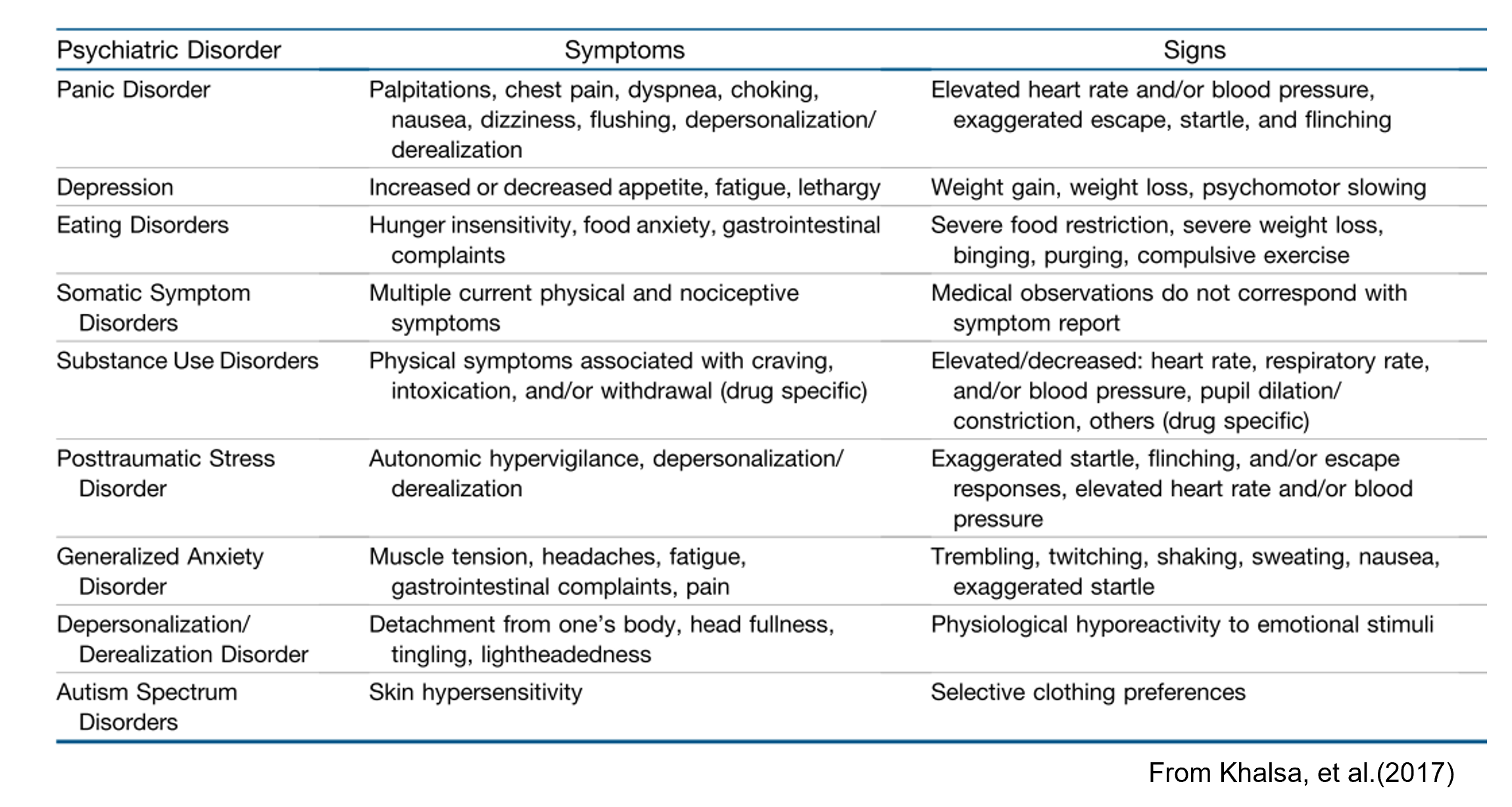
Given the significance of interoception in emotional processes, it is expected that people with affective mental disorders (e.g., depression, anxiety disorders) might have dysfunctional interoception. Indeed, recent studies have found such evidence, suggesting the close associations between symptoms of affective mental disorders and dysfunctional interoception. Therefore, it appears that poor interoceptive perception is characteristic of emotion dysregulation and psychopathology. Reduced signal-to-noise ratio in interoceptive afferents (i.e., inaccurate interoception) and maladaptive evaluation of them might increase risk for anxiety and depression by inducing overactivation in brain regions involved in emotional and cognitive control, leading to dysfunctional affective thought processes (e.g., worrying and negative mental rumination; Paulus & Stein, 2010).
Measurements of Interoception
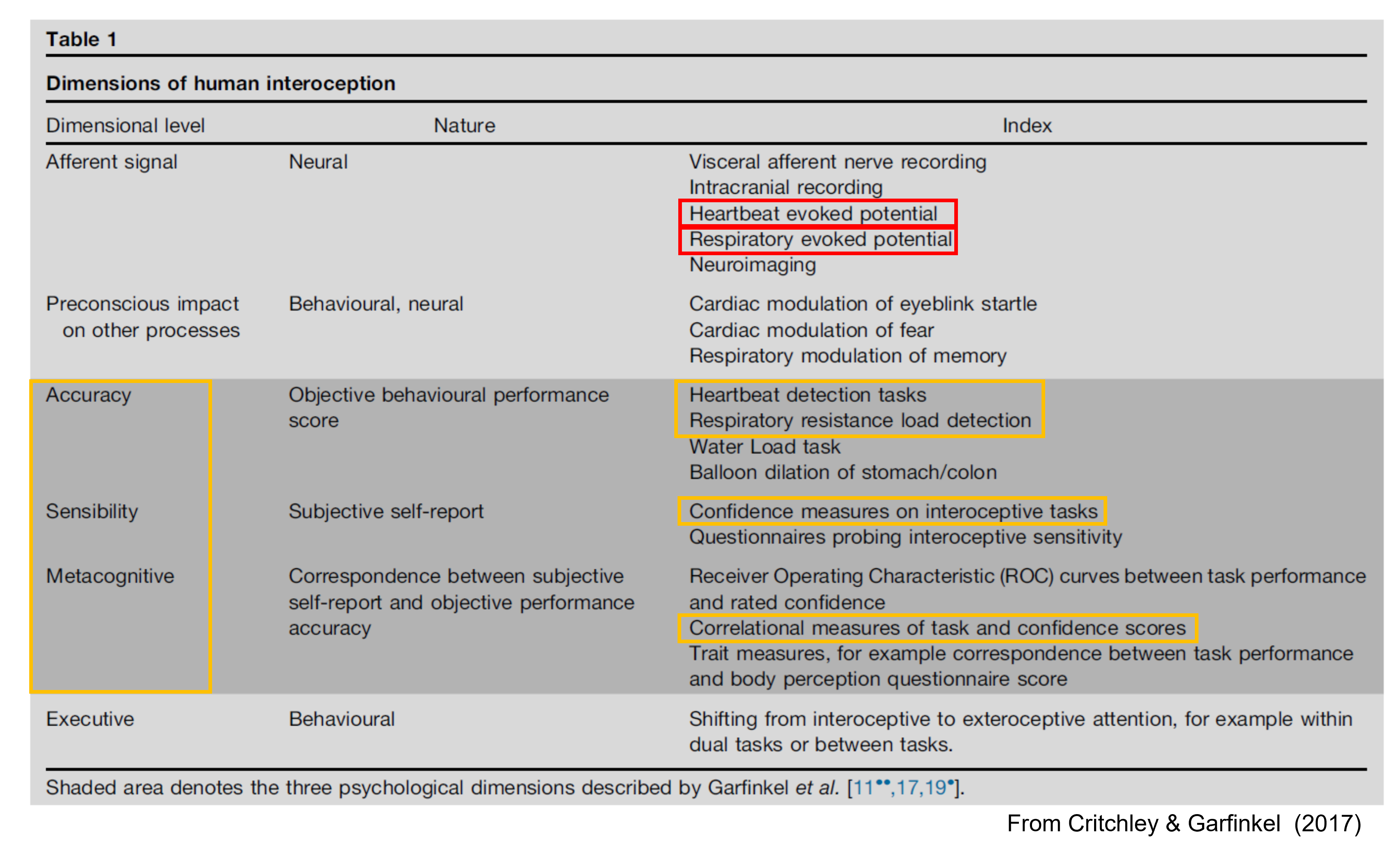
Individual differences in interoceptive ability can be measured through questionnaires or behavioral tests, with heartbeat detection tasks being widely used. While there are psychometric limitations, these measures have face-validity and can inform hypotheses about how interoceptive ability contributes to symptoms or decision-making. A recent framework proposes a distinction between objective measures of interoception and subjective measures of interoception, as well as a measure of metacognitive interoceptive awareness. These dimensions of interoception are dissociable and can predict emotional states and affective psychopathology. The dimensional model of interoception can be extended to incorporate lower-level measures of afferent neural traffic and the preconscious impact of interoceptive signals on sensory processing. Higher interoceptive dimensions can encompass executive processes, including flexible switching of interoceptive attention.
Heartbeat-Evoked Brain Responses (HEBR)
HEBR is the functional neural measure of cardiac interoception that represents the brain responses to the prominent ECG events (e.g., R-peaks). HEBR provides the neural indices of interoceptive CNS responses in high-temporal resolution. Most HEBR studies have used the time-domain measure (i.e., heartbeat-evoked potentials [HEP]), demonstrating its significant roles in various cognitive and affective processes, including interoceptive attention, arousal, affective processes, bodily self-consciousness, and visual perceptual awareness.
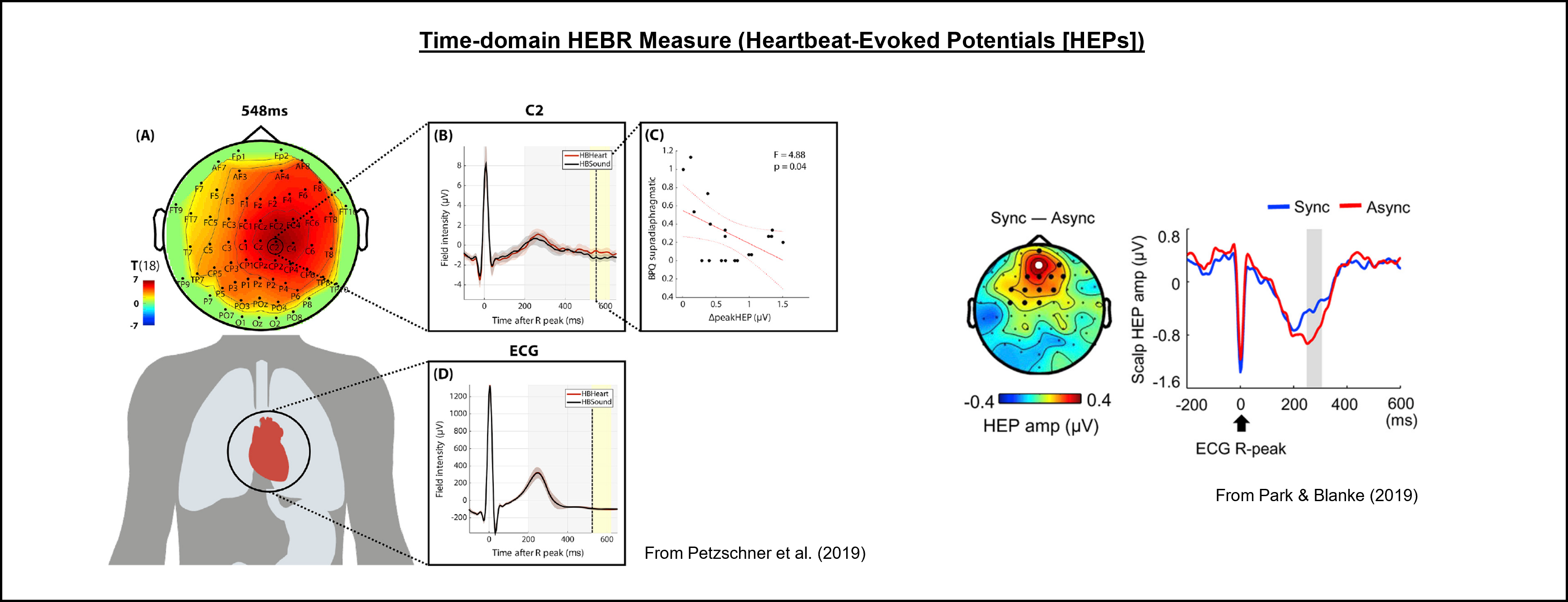
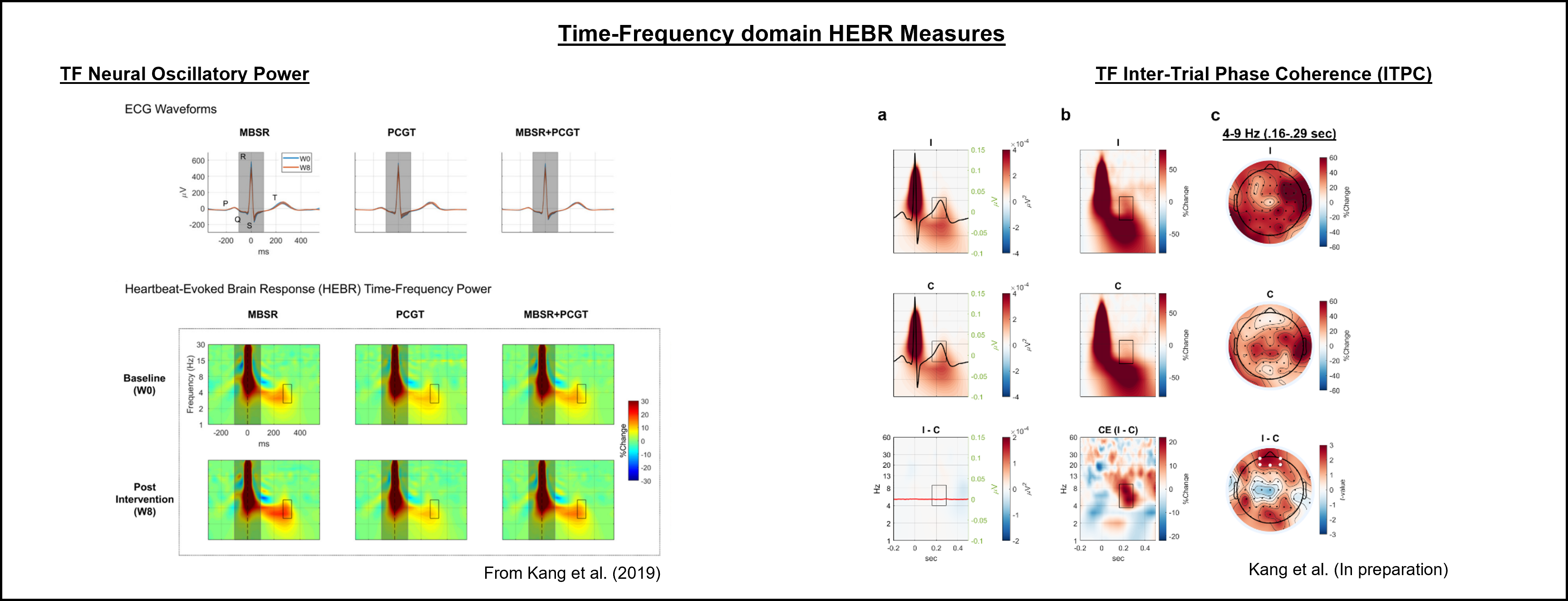
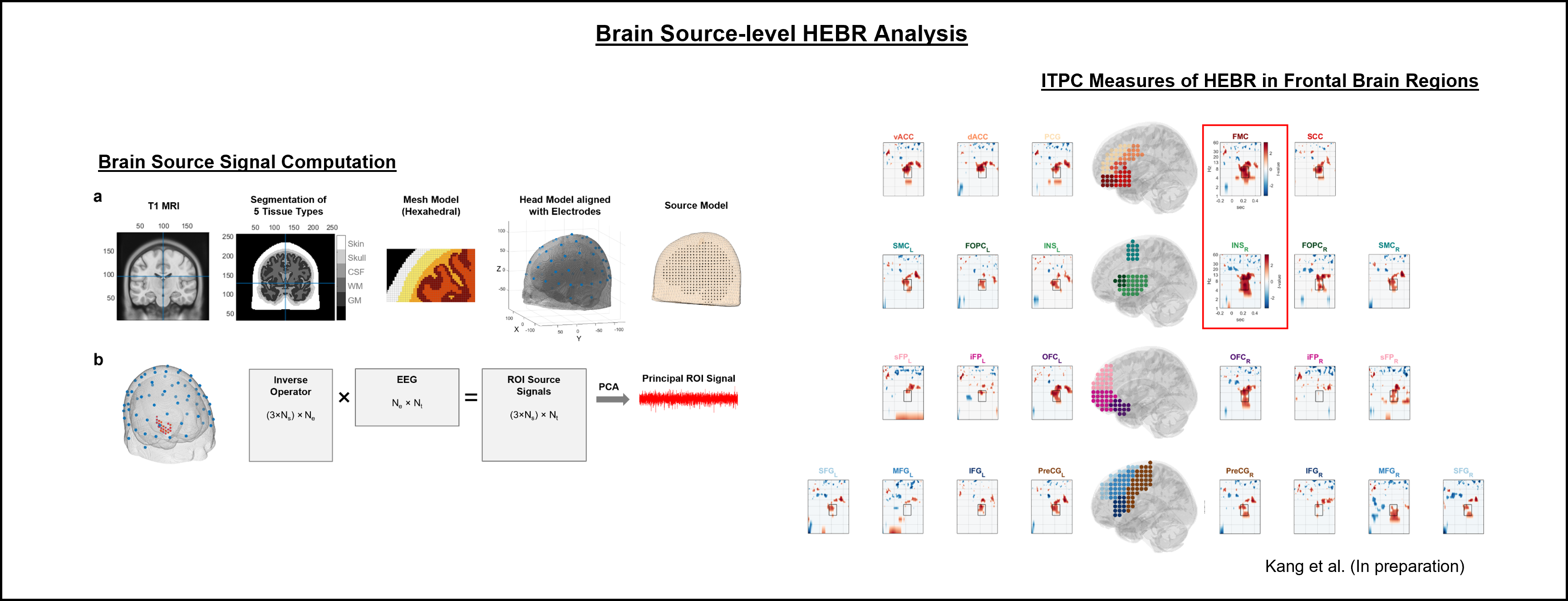
HEBR Underlying Cognitive/Emotional Processes
PWe study the role of cardiac interoceptive brain responses (i.e., HEBR) in cognitive and emotional processes using experimental task paradigms, EEG, ECG, and various data analysis techniques.
